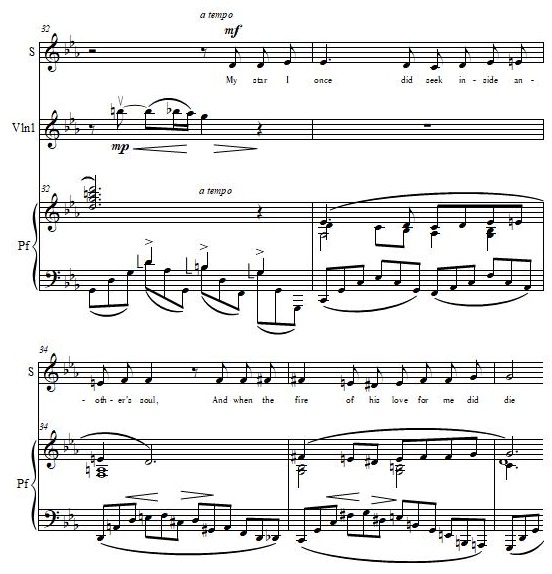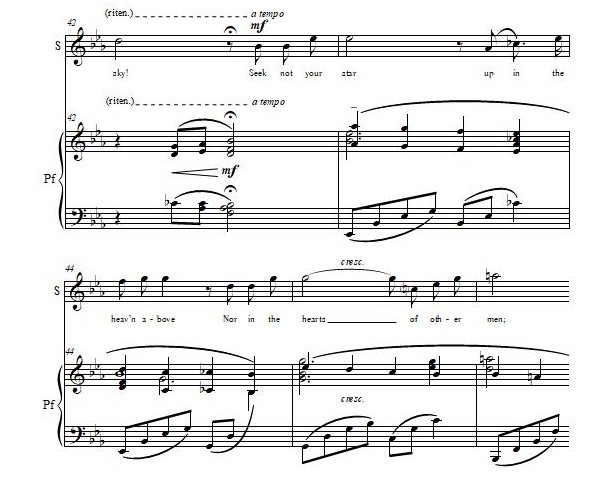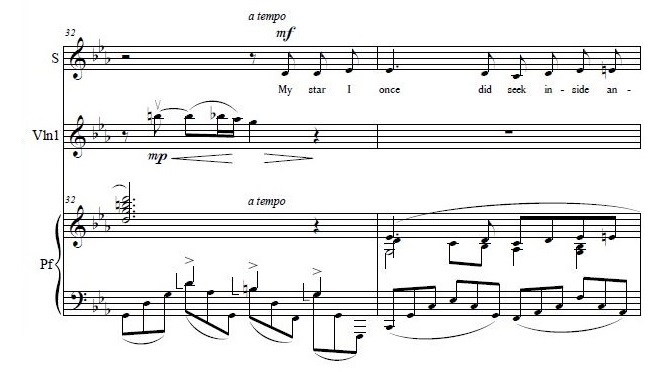From Words to Music (“I Have a Star,” Part 2)
I wrote the poem that became the text for my vocal work “I Have a Star” around 1983-1984, later setting it to music in March 1985. Hence the words reflect my personal experience. My previous blog post examined the relationship between the text and the music in the A section of the work’s ABA form. The core ideas of the text appear in the middle B section. Starting in bar 32, the text shifts into narrative mode. It first describes how I sought my star in the heart and soul of another, with disastrous results. Here the soprano line weaves around a chromatic progression from D up to G. The anguish, struggle, and self-alienation of that period in my life is suggested by the somber and unusual harmonic progression and the twisted shapes in the left hand of the piano part.

Beginning at bar 37, however, the mood of the music changes abruptly as the text references how I finally found consolation in “my inner star.” The harmonies suddenly become diatonic, and the contortions in the left-hand part of the piano give way to peaceful arpeggios. The writing here is somewhat suggestive of Renaissance or Baroque ecclesiastical music.

Yet “I Have a Star” is not intended as a religious work, at least not in the usual sense, although undeniably it is deeply spiritual. The text in bars 42-46 advises: “Seek not your star up in the heav’n above / Nor in the hearts of other men.”

So where does one find one’s star, then? That question is answered in the passage that immediately follows, which climaxes the section. My next post to this blog will examine the text and music from there to the end of the piece. UPDATE: Part 3 is here.

